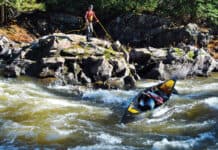Registering your kayak can feel like an intimidating task, but we’re here to demystify kayak registration. From which states do and don’t require paddlecraft registration, to state-by-state specifics, here is how to register your kayak in every state:
If you live in these states, you don’t have to register your kayak:
In Alabama, Alaska, Arizona, Arkansas, California, Colorado, Connecticut, Delaware, Florida, Georgia, Hawaii, Illinois, Indiana, Kansas, Kentucky, Louisiana, Maine, Maryland, Massachusetts, Michigan, Mississippi, Missouri, Montana, Nevada, New Hampshire, New Jersey, New Mexico, New York, North Carolina, North Dakota, Oklahoma, South Carolina, Tennessee, Vermont, Washington, West Virginia, and Wisconsin you don’t have to register your kayak or canoe.
While you don’t have to register your kayak or canoe in the states above, you may still be required to pay any local launch use fees.
In Illinois and Arizona paddlecraft were previously required to be registered, but the requirement was repealed in 2018 and 2020 respectively.
When do you have to register your kayak?
Whether or not you have to register your kayak depends on the state you reside in, where you plan to paddle, the length of your kayak and whether or not you plan to add a motor or sail.
If you’re a short-term visitor to a state that requires registration, you often don’t have to register your kayak. Local launch permits and fees still apply.
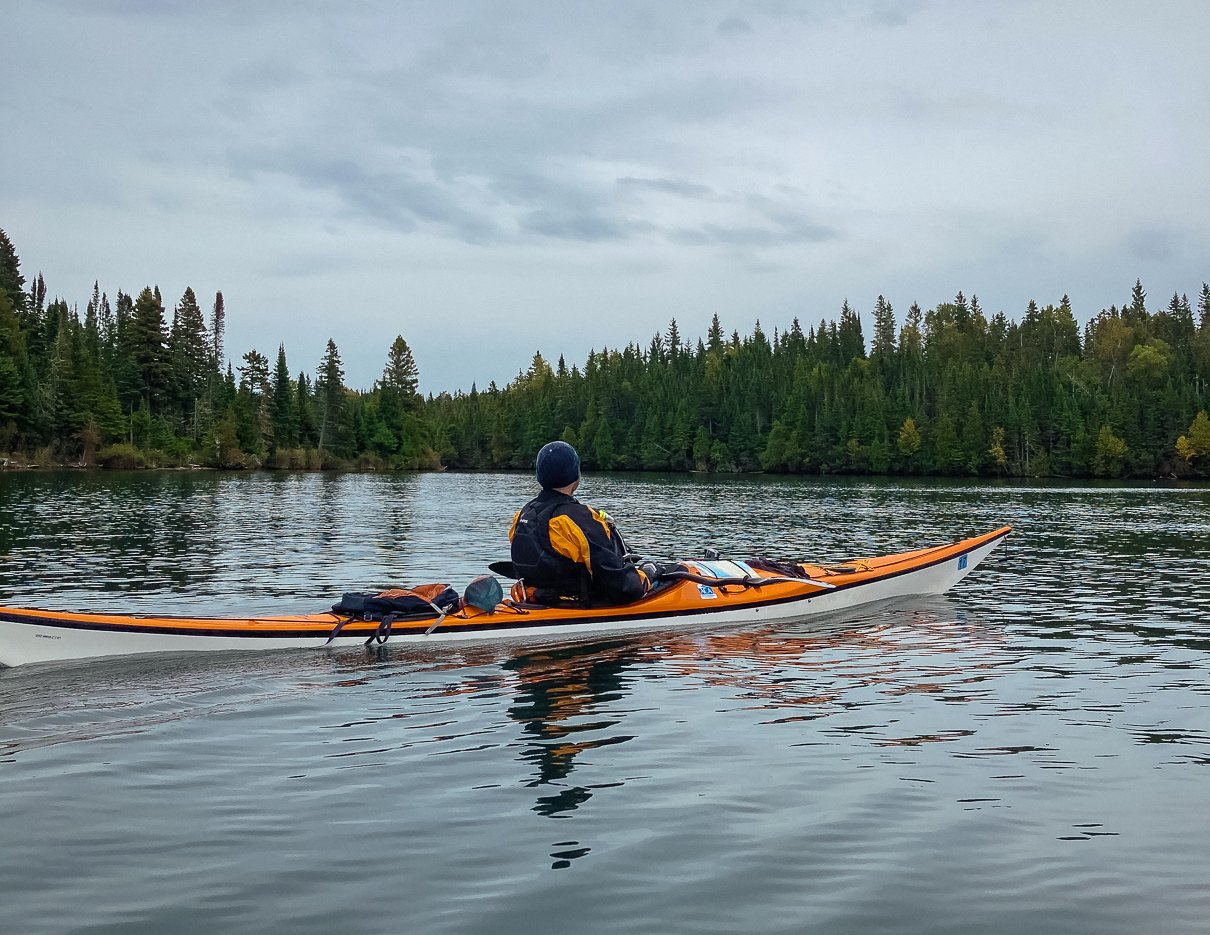
Adding an electric trolling motor almost always means you need to register your kayak or canoe. Additionally, if a kayak or canoe is used for guiding services, rentals, or any commercial purpose you may be required to register your boat. Adding a sail to your kayak may also change requirements. In many states with registration requirements, kayaks under ten feet are not required to be registered.
Why register your kayak:
Fees collected from kayak registration fund a number of public projects including boaters safety programs, maintenance of public waterways, and marine conservation. Registration can also help recover your boat in the event it is lost or stolen.
State-by-state registration and permit requirements
From Alabama to Wyoming, here is how to register your kayak state-by-state:
Alabama:
In Alabama you do not need to register your kayak or canoe unless it is motorized or you add a sail.
Alaska:
In Alaska you do not need to register paddlecraft unless it has a motor or is used as a fishing guide boat.
Arizona:
In Arizona you do not need to register your kayak or canoe unless it is motorized.
Arkansas:
In Arkansas you do not have to register your kayak or canoe unless it is motorized.
California:
In California you do not have to register paddlecraft including kayaks and canoes; if you add a motor then your kayak or canoe must be registered.
Colorado:
In Colorado canoes and kayaks without a motor do not need to be registered, but must be legibly marked with the owner’s name and address.
Connecticut:
In Connecticut you do not have to register your kayak or canoe unless it is motorized.
Delaware:
In Delaware you do not have to register your paddlecraft unless you add a motor.
Florida:
In Florida kayaks and canoes are not required to be registered so long as they do not have a motor.
Georgia:
Paddlecraft in Georgia are not required to be registered unless they are powered by a motor.
Hawaii:
In Hawaii kayaks and canoes do not require registration unless they have a motor of five horsepower or greater.
Idaho:
While canoes and kayaks are not required to be registered in Idaho, an Aquatic Invasive Species sticker is required; this requirement also applies to any watercraft visiting from out of state. The only watercraft exempt from this requirement are inflatable paddlecraft under 10 feet in length without a motor.
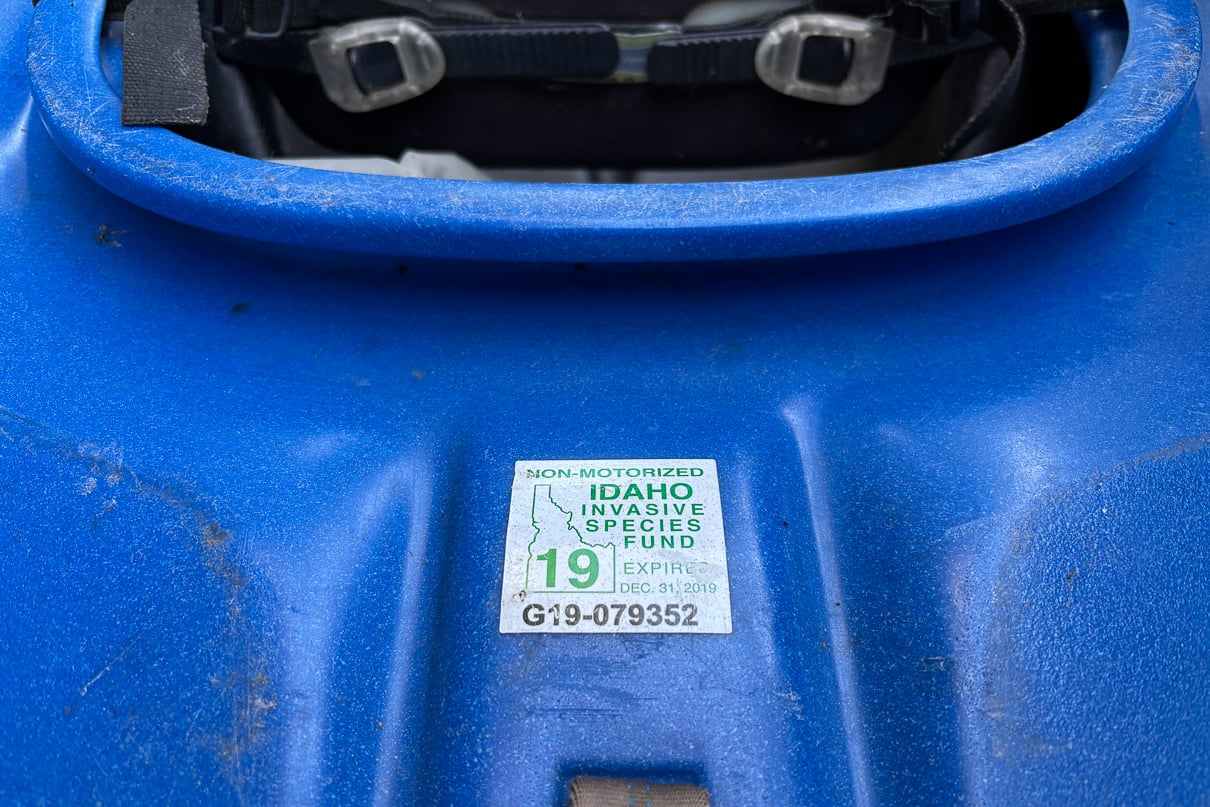
Illinois:
In Illinois unpowered watercraft including kayaks and canoes do not need to be registered.
Indiana:
In Indiana you do not have to register canoes and kayaks so long as they are not motorized.
Iowa:
In Iowa, kayaks and canoes that are longer than 13 feet and have no sail or motor are required to be registered. To register your kayak in Iowa you will need a bill of sale, the manufacturer’s certificate of origin and a registration fee. If purchasing a used boat, you will still need the boat’s registration and title to register the boat in your own name. Registrations are not transferable; even if the previous owner registered the boat, you will need to register the boat in your own name.
You have 30 days after a private sale to register your boat in Iowa; registration renewals can be processed with any county recorder office in Iowa.
Visiting boats have 60 days before they need to register their boats in Iowa. Registrations expire on April 30 of the current registration cycle. More information can be found in the Iowa Boat Registration Guide.
Kansas:
In Kansas vessels not powered by a motor including canoes and kayaks are not required to be registered.
Kentucky:
In Kentucky you do not have to register a kayak or canoe so long they are not motorized.
Louisiana:
In Louisiana you do not have to register a kayak or canoe so long as it is not motorized.
Maine:
In Maine you do not have to register a kayak or canoe so long as it is not motorized.
Maryland:
In Maryland you do not have to register a kayak or canoe so long as it is not motorized.
Massachusetts:
In Massachusetts non-motorized boats including kayaks and canoes do not need to be registered.
Michigan:
In Michigan, you do not need to register your kayak or canoe if it is under 20 feet in length and does not have a permanently affixed engine.
Minnesota:
In Minnesota, you will need to register your kayak or canoe if it is over 10 feet in length. If you are visiting from out of state, you do not need to register your canoe or kayak as long as it is not in Minnesota for more than 90 consecutive days. Register your kayak at the local deputy registrar of motor vehicles, or renew your registration online.

When registering your boat you will need to know the boat’s length, manufacturer, hull material (plastic, fiberglass, wood), model, year, serial or hull identification number (HIN) and a present receipt of sale and a registration fee. Once registered, your registration is good for three calendar years from the time of registration. Your registration stickers should be placed on either side of the bow, or front, of your boat, high enough above the water to be seen while the boat is loaded.
Mississippi:
In Mississippi you do not have to register your kayak or canoe unless it is equipped with a motor.
Missouri:
In Missouri you do not have to register paddlecraft unless it is equipped with a motor.
Montana:
In Montana you do not have to register your kayak or canoe so long as it is not motorized.
Nebraska:
In Nebraska you do not have to register your non-motorized kayak or canoe, but kayakers and canoeists are required to purchase an Aquatic Invasive Species stamp.
Nevada:
In Nevada you do not have to register kayaks, canoes and non-motorized boats.
New Hampshire:
In New Hampshire kayaks and canoes are not required to be registered so long as they are human-powered and not powered by a motor.
New Jersey:
In New Jersey kayaks and canoes do not have to be registered as long as they do not have a motor.
New Mexico:
In New Mexico you do not have to register paddlecraft unless it is motorized.
New York:
In New York kayaks and canoes do not have to be registered so long as they are not motorized.
North Carolina:
In North Carolina kayaks and canoes that are propelled without a motor do not need to be registered.
North Dakota:
In North Dakota you do not have to register paddlecraft so long as it is not motorized.
Ohio:
In Ohio, registrations are required for every type of recreational boat, except paddleboards, kitboards, and floatubes. Registrations are good for three years and expire on March 1.
To register a kayak or canoe in Ohio, you will need proof of ownership, information about the boat including boat’s length, manufacturer, hull material (plastic, fiberglass, wood), model, year, serial or hull identification number (HIN), identification for yourself, and a registration fee. Cost of registration depends on the length of boat, which type of registration you are buying, and propulsion type.
New canoes and kayaks will need to be registered in person at the Boat Registration Agent or at a Watercraft Office; when purchasing and registering a used canoe or kayak you will also need to register in person.
Oklahoma:
In Oklahoma paddlecraft are not required to be registered unless they are powered by any other means than human power.
Oregon:
In Oregon, while kayaks, canoes and standup paddleboards do not have to be registered unless they are part of a commercial operation, you will need to purchase a Waterway Access Permit; options are available for one week, one year, and two year permits. Permits can be purchased online.
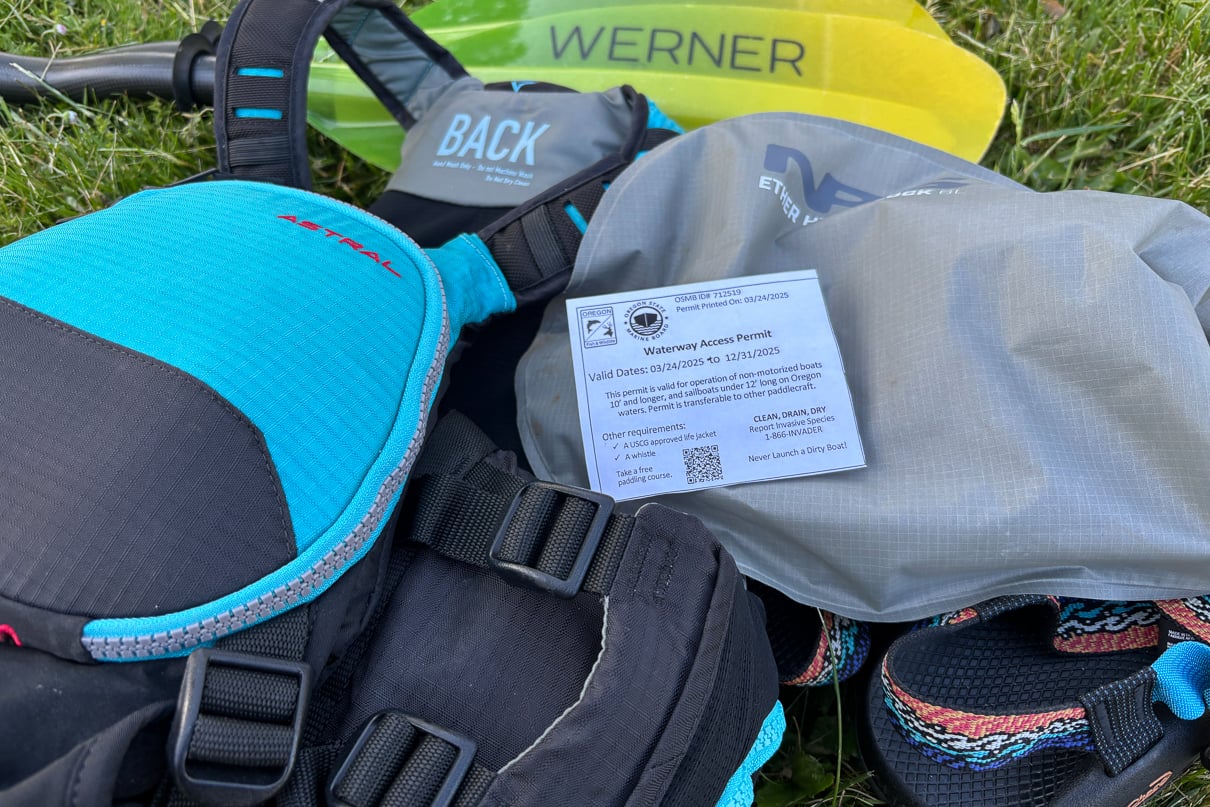
All kayaks and canoes in Oregon including nonresidents are required to purchase a Waterway Access Permit. One permit per paddler is required. Permits are transferable to other paddlecraft; children 13 and younger do not need a permit.
Funds from the Oregon waterway access permits support the unique needs of paddlers throughout the state including single car spaces, staging areas, and low-freeboard docks with safe launches, as well as support the development of new sites. These funds are distributed as boating facility grants to local and state governments, tribal governments and park organizations, and available to nonprofits and public bodies to develop safety programming or purchase equipment to reduce barriers for underserved communities.
A waterway access permit is also required for coastal paddlers; Oregon waters are defined as up to from three miles out from the shoreline.
Pennsylvania:
Paddlecraft including standup paddleboards must be registered in Pennsylvania OR display a Fish and Boat Commission launch permit or Pennsylvania State Parks and Forests launch permit; both are not required.
There are several benefits to registering your paddlecraft in Pennsylvania instead of purchasing a launch permit. While cost of registration and permits are the same, registering your kayak, canoe or standup paddleboard comes with renewal reminders, the registration is recognized in other states, the funds go to increase federal funding for Pennsylvania boating programs, and the data stored from your registration can be useful in recovering a lost or stolen kayak, canoe or standup paddleboard.
To register your kayak in Pennsylvania you will need proof of ownership and to complete an application for Pennsylvania boat registration and or boat title form (REV- 366).
Rhode Island:
Kayaks and canoes longer than 12 feet are required to be registered in Rhode Island, and kayaks and canoes longer than 14 feet are required to be titled in addition to registered. Even if you do not live in Rhode Island but Rhode Island is the primary place of use for your kayak or canoe, you must register your kayak or canoe in Rhode Island.
To register your kayak or canoe in Rhode Island, you will need a proof of ownership such as a bill of sale, a manufacturer’s statement of origin, a Boat Registration Application and fee, Application for Initial Vessel Certificate of Title (RIGL), and a pencil tracing of Hull identification number (HIN).
To register a homemade boat in Rhode Island, you will need copies of receipts for all materials including sales tax, a photo of your finished boat, a notarized statement including a full description of the boat, cost of all materials and construction plans and a boat inspection through DEM Division of Law Enforcement.
Registration cost varies depending on boat length. Registrations are valid for two years and begin in March and expire on the last day of February. Registrations are done through the Rhode Island Outdoors application portal.
South Carolina:
In South Carolina you do not have to register paddlecraft so long as they are human-powered and do not have a motor attached.
South Dakota:
All kayaks and canoes in South Dakota over 12 feet in length must be registered. Apply for Boat and Title Registration through the South Dakota Department of Revenue. Registration lasts one year and cost depends on the size of boat and type of propulsion. Additionally, if over 18 feet long your canoe or kayak will need an identification number placed on the boat.
To register your kayak or canoe in South Dakota you will need proof of ownership or a bill of sale, title (if applicable), previous registration or manufacturer’s certificate of origin, and a registration fee. Registration can be done in person at your local county treasurer’s office.
If your paddlecraft is registered in another state, you have 60 days before registration in South Dakota is required.
Tennessee:
In Tennessee kayaks and canoes do not need to be registered unless it is powered by a motor.
Texas:
In Texas kayaks and canoes under 14 feet in length without a motor are not required to be registered.
If a kayak has a motor or is longer than 14 feet, you will need to register your kayak. To register your kayak or canoe in Texas you will need a bill of sale, a valid US identification, boat forms and a registration fee.
Utah:
In Utah, canoes and kayaks do not need to be registered; however all boaters in Utah regardless of residency status are required to take the annual Utah mussel-aware boater course and have proof of course completion with them. This includes canoes, kayaks and standup paddleboarders.
Vermont:
In Vermont kayaks and canoes do not require registration so long as they do not have a motor attached.
Virginia:
In Virginia kayaks and canoes do not require registration if they are not motorized and under 18 feet long. If your kayak or canoe is longer than 18 feet you will need to register your kayak or canoe via this form from the Virginia Department of Wildlife Resources.
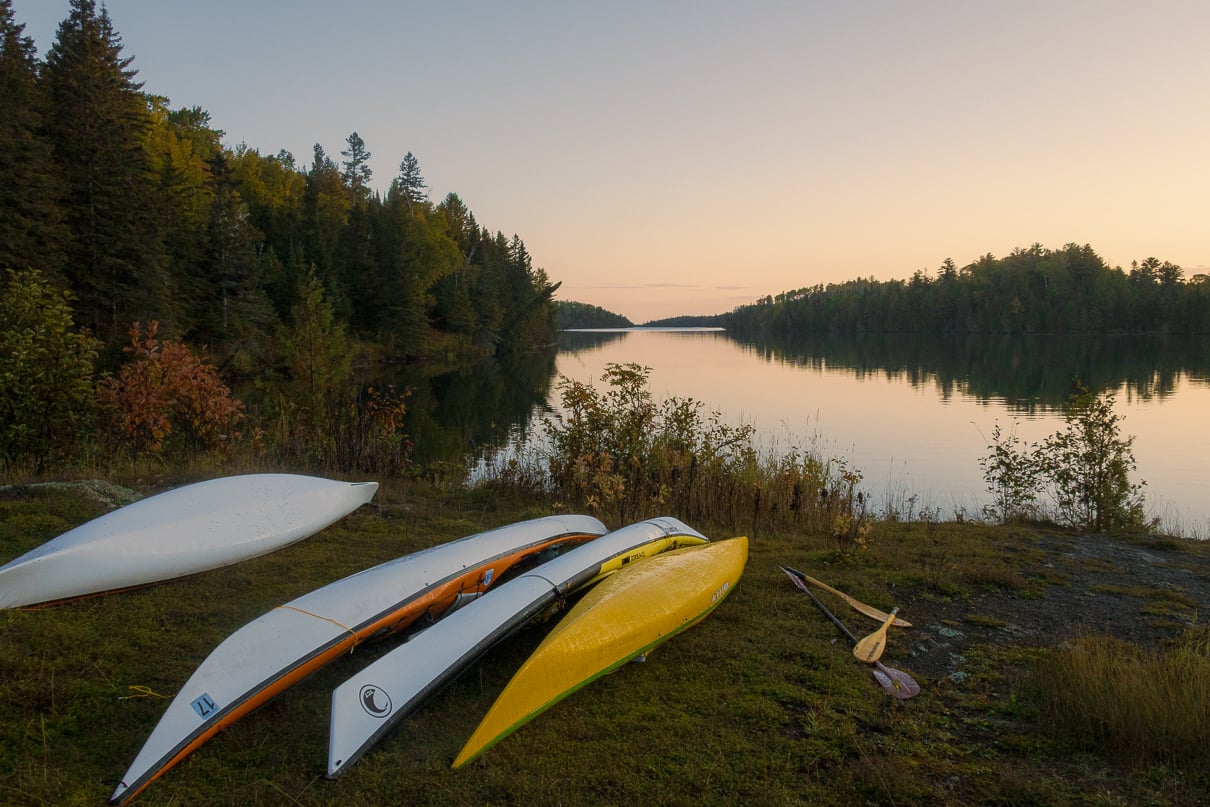
Washington:
In Washington kayaks and canoes not powered by a motor or sail are not required to be registered.
West Virginia:
In West Virginia kayaks and canoes are not required to be registered unless they have a motor.
Wisconsin:
In Wisconsin you do not have to register paddlecraft as long as it does not have a motor.
Wyoming:
Paddlecraft in Wyoming do not need to be registered, but all watercraft including paddlecraft are required to display an Aquatic Invasive Species decal. This requirement applies to all watercraft in Wyoming waters, and includes any watercraft paddling Wyoming waters for any length of time. Standup paddleboards are defined as watersport toys and exempt from the decal requirements.






